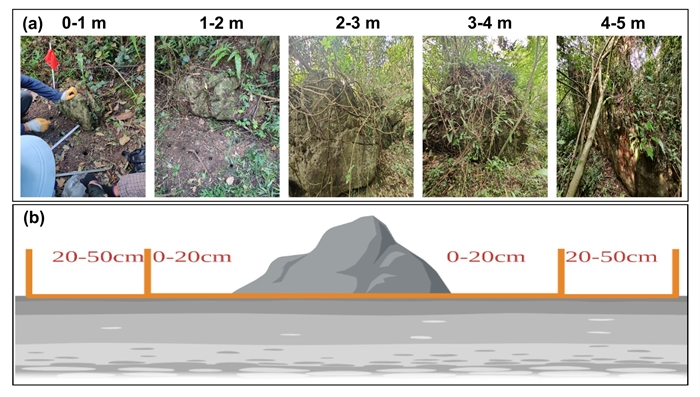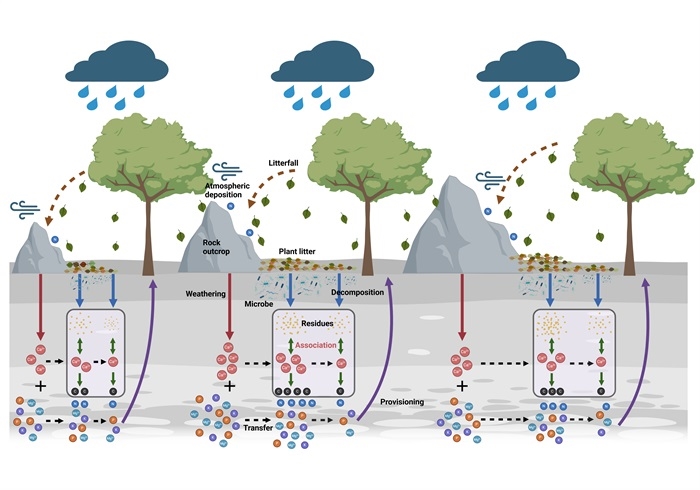
Rock outcrops, long regarded as passive geological features, may play an active and crucial role in shaping soil function in mountain ecosystems, according to new study published on March 31 in Functional Ecology.
Researchers led by Prof. WANG Kelin from the Institute of Subtropical Agriculture of the Chinese Academy of Sciences has uncovered how both the size of rock outcrops and their proximity to surrounding soils significantly influence key soil processes in mountain ecosystems.
The study, conducted in the mountainous karst regions of southwest China, a landscape characterized by numerous prominent rock outcrops, focused on 31 rock outcrops of varying diameters, categorized into five size classes ranging from zero to five meters. The researchers collected plant litter and soil samples at two distances from the rocks—0–20 cm and 20–50 cm—and evaluated five critical soil functions: nutrient provisioning, microbial growth efficiency, organic matter decomposition, nutrient cycling, and plant-microbe symbiosis.
According to the researchers, soil functions were consistently stronger in areas closest to the rock outcrops. This effect is largely due to what the researchers call the "funneling effect"—rocks intercept and concentrate dust, rainwater, plant litter, and nutrients such as nitrogen and phosphorus from the atmosphere. These "hotspots" involve continuous interactions and feedback loops among rocks, soils, microorganisms and plants, including nutrient deposition, microbial activity and plant growth.
Interestingly, the size of the rock outcrops played an important role in determining soil functions, with a hump-shaped relationship. Medium-sized rock outcrops (2-4 meters in diameter) had the strongest positive impact on the surrounding soil functions. These rocks tend to release more calcium through weathering, which stabilizes soil organic carbon and boosts soil functions. In contrast, smaller rocks contribute fewer resources to the surrounding soil, while larger rocks limit the accumulation of nutrients and organic matter, leading to a weaker impact on soil functions.
These findings highlight how rock outcrops create localized "hotspots" where soil functions are enhanced, and how the effects of these outcrops vary depending on their size and proximity.
"Future studies and ecosystem models should incorporate both rock size and distance to improve the accuracy of ecosystem assessments and management strategies," said Prof. ZHAO Jie, corresponding author of the study.

Determination of different sizes of exposed rocks (a) and sampling to varying distances from rocks (b) (Image by LI Jiangnan)

Conceptual model revealing the mechanisms of rock outcrop effects on soil functions in mountain ecosystems (Image by LI Jiangnan)

86-10-68597521 (day)
86-10-68597289 (night)

52 Sanlihe Rd., Xicheng District,
Beijing, China (100864)

